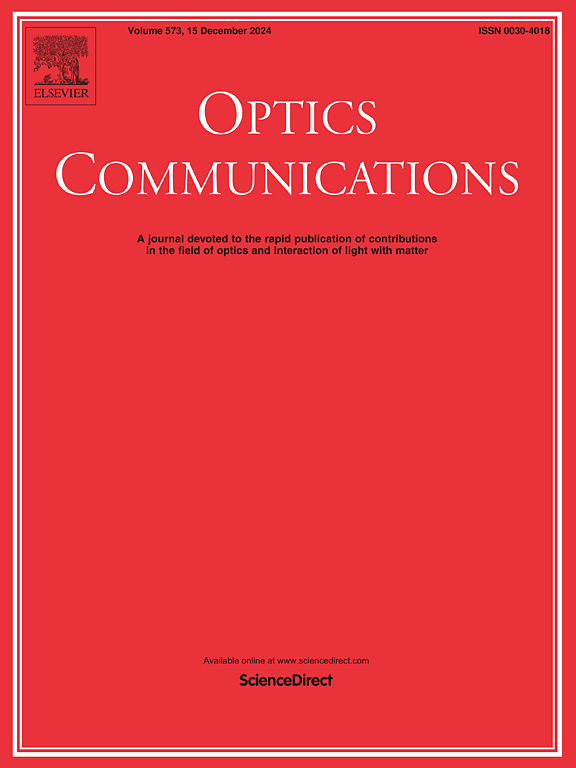Microwave tunable metasurface with independent wide phase and large amplitude modulation for multifunctional beam control and RCS Reduction
IF 2.2
3区 物理与天体物理
Q2 OPTICS
引用次数: 0
Abstract
In this paper, a microwave tunable metasurface with independent control of amplitude and phase is proposed. It consists of a varactor diode loaded phase modulation layer, an air spacer, and a PIN diode loaded amplitude modulation layer, all of which are successively cascaded along electromagnetic (EM) propagation. By controlling the equivalent lumped parameters of varactor diodes and PIN diodes independently through bias voltages, modulation of the reflected wave is achieved with 180-degree dynamic phase range and 0.2–0.9 dynamic amplitude range from 4.59 to 4.97 GHz, both of which don't interfere with each other. Additionally, reflected waves under oblique incident angles is conducted to validate the robustness of the design. Designs with diversified lumped parameters and field distributions are further studied in detail. Based on the principle of encoded metasurfaces, three-beamforming, four-beamforming, and radar cross section (RCS) reduction structures are implemented. A 4 × 2 metasurface sample is fabricated and tested in rectangular waveguide, demonstrating the feasibility of this design strategy. This advancement provides new insights for the further development of multifunctional wireless communication systems and radar technologies.
具有独立宽相位和大振幅调制的微波可调谐超表面,用于多功能波束控制和RCS降低
本文提出了一种具有幅度和相位独立控制的微波可调谐超表面。它由一个负载相位调制层的变容二极管、一个空气间隔层和一个负载调幅层的PIN二极管组成,所有这些都沿着电磁(EM)传播顺序级联。通过偏置电压分别控制变容二极管和PIN二极管的等效集总参数,实现了对反射波在4.59 ~ 4.97 GHz范围内180度动态相位范围和0.2 ~ 0.9动态幅度范围的调制,且两者互不干扰。此外,对斜入射角下的反射波进行了测试,以验证设计的鲁棒性。进一步研究了多种集总参数和场分布的设计。基于编码超表面原理,实现了三波束形成、四波束形成和雷达截面(RCS)缩减结构。在矩形波导中制作了一个4 × 2的超表面样品并进行了测试,验证了该设计策略的可行性。这一进展为多功能无线通信系统和雷达技术的进一步发展提供了新的见解。
本文章由计算机程序翻译,如有差异,请以英文原文为准。
求助全文
约1分钟内获得全文
求助全文
来源期刊

Optics Communications
物理-光学
CiteScore
5.10
自引率
8.30%
发文量
681
审稿时长
38 days
期刊介绍:
Optics Communications invites original and timely contributions containing new results in various fields of optics and photonics. The journal considers theoretical and experimental research in areas ranging from the fundamental properties of light to technological applications. Topics covered include classical and quantum optics, optical physics and light-matter interactions, lasers, imaging, guided-wave optics and optical information processing. Manuscripts should offer clear evidence of novelty and significance. Papers concentrating on mathematical and computational issues, with limited connection to optics, are not suitable for publication in the Journal. Similarly, small technical advances, or papers concerned only with engineering applications or issues of materials science fall outside the journal scope.
 求助内容:
求助内容: 应助结果提醒方式:
应助结果提醒方式:


